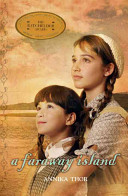
Torn from their homeland, two Jewish sisters find refuge in Sweden. It’s the summer of 1939. Two Jewish sisters from Vienna12-year-old Stephie Steiner and 8-year-old Nellieare sent to Sweden to escape the Nazis. They expect to stay there six months, until their parents can flee to Amsterdam; then all four will go to America. But as the world war intensifies, the girls remain, each with her own host family, on a rugged island off the western coast of Sweden. Nellie quickly settles in to her new surroundings. She’s happy with her foster family and soon favors the Swedish language over her native German. Not so for Stephie, who finds it hard to adapt; she feels stranded at the end of the world, with a foster mother who’s as cold and unforgiving as the island itself. Her main worry, though, is her parentsand whether she will ever see them again. From the Hardcover edition.
See the review at WOW Review, Volume 3, Issue 2
- ISBN: 9780385736176
- Author: Thor, Annika
- Published: 2009 , Delacorte Books for Young Readers
- Themes: Adaptations, bully, change, Foster family, Holocaust, Jews, oppression, overcome, refugee, Religion, War, World War II
- Descriptors: Austria, Europe, Historical Fiction, Intermediate (ages 9-14), Sweden
- No. of pages: 256

When considering the theme “Change is Inevitable,” the novel, A Faraway Island, is a perfect example of how our lives can change at any moment. Set in Sweden during World War II, this story presents Stephie and her sister, who are suddenly separated from their parents and removed from all they have known. Readers with some knowledge of the European Holocaust will find that much of the plot reflects the larger plight of European Jews during the Holocaust. Stephie is bullied, denied elements of the life she loved in Vienna, and is expected to adjust to a new world that has little or no regard for her prior life, or in many ways, for her personhood. And this is done in a kind and giving society, which gives a great comparison to what was happening in the rest of Europe at the time. As a reader, I watched with anxiety as Stephie was transported to Sweden on the Kindertransport and then attempted to make her way into a new geographical as well as cultural location. I felt a powerlessness that would be worth discussing with young people and how often we feel powerless to intervene in the interactions around us. While change is inevitable, it does not mean we aren’t able to alter the outcome or the situation.
I also noted Stephie’s acclimation was more than just attempting to fit in to a new place. She was compelled—by her own volition and her love of family—to remain true to her heritage as an Austrian Jew. Yet, nothing about her new environment or her new life allowed her to overtly address this heritage. She was simply expected to make the adjustment, which is a type of violence that middle school students should address within their lives, their communities, and their society. A Faraway Island is also the perfect text to use to discuss setting and the role it plays in the novel. An island, far removed from the mainland, just like Stephie, far removed from home and from her new community. This is also a great story for discussing how, as readers, we are witnesses to Stephie’s struggle to remain faithful to herself, and to take care of herself in a world where no one appeared able or willing to do so. What a way to discuss the larger situation of the Holocaust!
The European Holocaust was a time of dramatic change in the world fabric. As readers and as historical beings, we are able to engage this text as it quietly reveals how change can be devastating and hopeful, inevitable and yet, with care, altered to create a more accepting and more compassionate world.